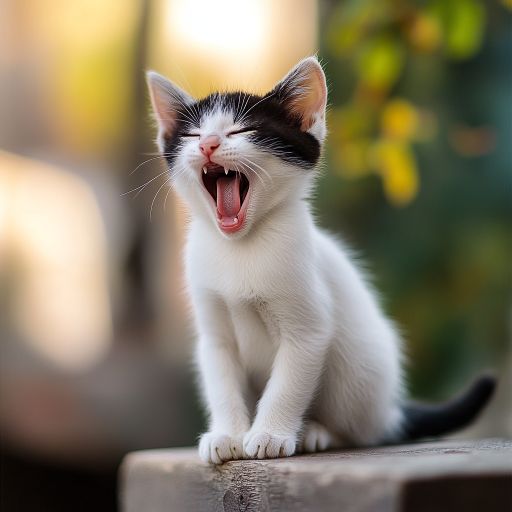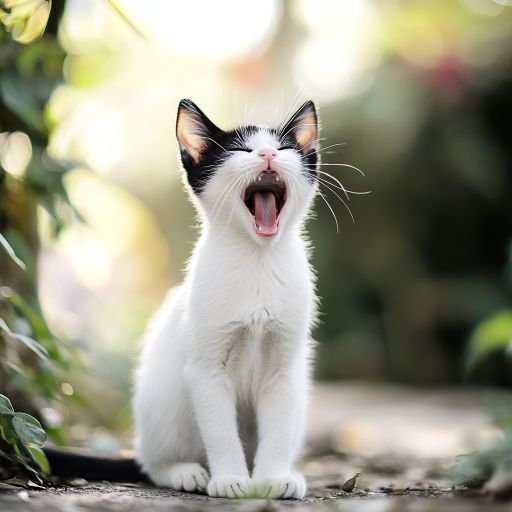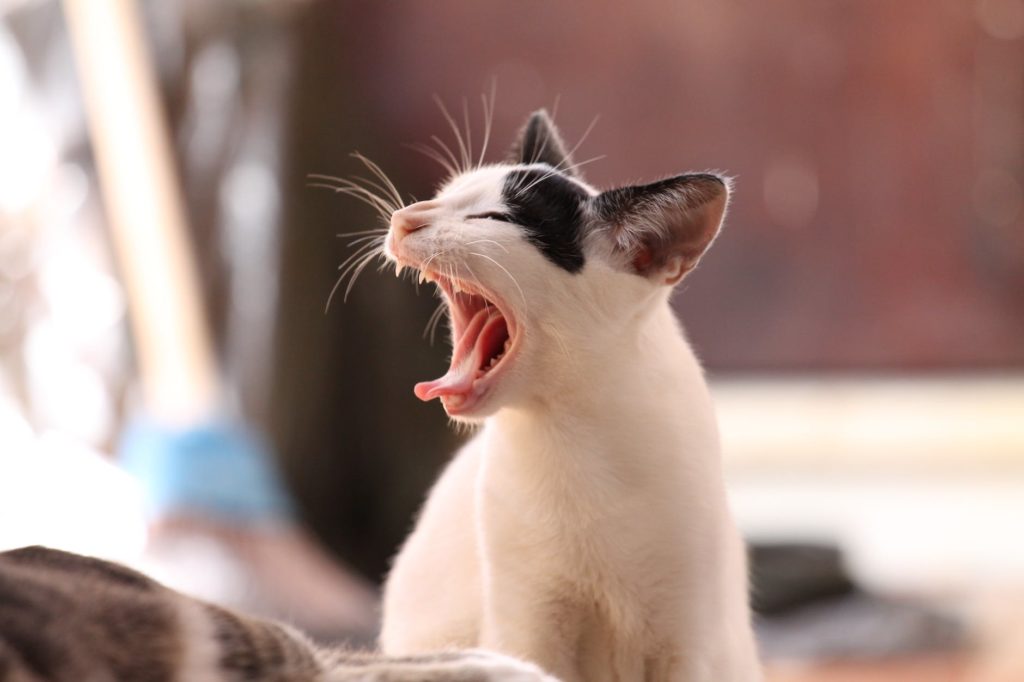Stop Problem Chewing in Cats
As cat owners, we all love our furry friends, but sometimes they can develop bad habits, such as problem chewing. Problem chewing can be destructive to your cat’s health and your home, and it’s essential to address this issue before it gets out of hand. In this article, we will discuss how to stop the problem of chewing in cats.
Live Pee Free! Odor Eliminator 100% Eliminates Pet Odor on Contact. 20% Off. No Enzymes, No Fragrance, No Detergent, No Bleach – Safe for Kids and Pets.Table of Contents
Understanding Your Feline Friend’s Chewing Habits
Cats are known for their playful and sometimes mischievous behavior, but when it comes to problem chewing, many pet owners find themselves at their wit’s end. Chewing can range from nibbling on toys to devastating damage to furniture, shoes, and cords. While this behavior may seem amusing at first, it can pose serious risks to your cat’s health and safety. In this informative blog post, we will discuss 13 powerful tips to stop problem chewing in cats for good, providing practical solutions to save your belongings and ensure your feline’s well-being.
Understanding why cats chew is crucial for addressing the issue effectively. Cats might engage in chewing for various reasons, including boredom, dental issues, or stress. By identifying the underlying causes, you’ll be better equipped to implement the right strategies to curb this behavior. Stop Problem Chewing in Cats. Therefore, let’s delve deeper into practical solutions that will help you reclaim your home and peace of mind.
1. Assess Their Environment: The Importance of a Safe Space
Firstly, take a close look at your cat’s environment. A cluttered or unengaging space can often lead to boredom, prompting your cat to chew on whatever they can find, be it furniture, electrical cords, or even your prized houseplants. To combat this, create a stimulating environment filled with noise and visual attractions, such as cat trees, climbing shelves, and interactive toys.
Furthermore, ensure that your cat has a designated space where they feel comfortable and secure. A cozy bed or a quiet corner can provide them with the sanctuary they need to avoid resorting to chewing for comfort. Stop Problem Chewing in Cats. By taking these steps, you can help minimize their inclination to chew by creating an enriched environment that keeps their mind and body engaged.
2. Provide Engaging Toys: The Power of Playtime
Secondly, toys are essential for keeping your cat entertained and engaged. Opt for a variety of chew-proof toys that are specifically designed to withstand your cat’s chewing habits. Look for options made from durable materials such as rubber or hard plastic. Stop Problem Chewing in Cats. Additionally, consider toys that encourage problem-solving, like those that dispense treats or require manipulation to access a reward.
Moreover, rotate your cat’s toys to keep their playtime exciting. Cats can quickly lose interest if they have access to the same toys day in and day out. By alternating the toys available in your cat’s collection, you sustain their engagement levels and reduce the likelihood of them turning to inappropriate items for chewing.
3. Supervised Playtime: Keeping a Watchful Eye
A third method to curb problem chewing is to provide supervised playtime. When you’re able to observe your cat’s behavior closely, you can intervene before they start chewing on non-desirable items. Interactive playtime also strengthens your bond while allowing you to guide your cat away from harmful chewing practices. Stop Problem Chewing in Cats. Use this time to redirect their attention to appropriate toys when you notice them trying to chew on something they shouldn’t.
Additionally, consider scheduling regular play sessions throughout the day. A structured routine filled with interactive play will keep your cat mentally stimulated and less likely to engage in unwanted chewing behavior. Stop Problem Chewing in Cats. This consistent interaction reinforces positive habits and offers your cat the attention they crave.
4. Address Anxiety: Recognizing Stress Triggers
Next, assess whether anxiety is a factor contributing to your cat’s chewing problem. Cats can become anxious due to changes in their environment, such as moving to a new home or the introduction of a new pet. Stop Problem Chewing in Cats. Identifying the triggers for your cat’s anxiety is crucial in addressing their chewing behavior.
Once you’ve pinpointed the stressors, you can take steps to mitigate them. For example, create a calm atmosphere using pheromone diffusers or calming sprays that contain feline-friendly ingredients. Stop Problem Chewing in Cats. These products can help create a sense of security, reducing anxiety-driven chewing. Sometimes, simple changes in routine or environment can greatly minimize their stress levels.
5. Dental Health Matters: Regular Check-Ups
As we continue, it’s important to consider your cat’s dental health as a factor in problem chewing. Cats often chew to relieve discomfort caused by dental issues, such as gum disease or tooth decay. Schedule regular veterinary check-ups to ensure your cat’s teeth and gums are healthy. Stop Problem Chewing in Cats. Your vet can provide valuable insight into your cat’s chewing habits and may recommend specific dental chews or treatments.
Furthermore, maintain a regular dental care routine at home. This may include brushing your cat’s teeth or offering dental treats designed to promote oral health. Stop Problem Chewing in Cats. By addressing dental health, you not only provide relief for your cat but also significantly reduce their urge to chew as a coping mechanism.
6. Address Boredom: Enriching Daily Activities
Another vital aspect of curbing problem chewing is to combat boredom with enriching daily activities. Engaging your cat in mental and physical stimulation is essential. Stop Problem Chewing in Cats. Functions like puzzle feeders or toys that dispense treats when manipulated can provide hours of entertainment.
Moreover, consider incorporating new activities into your cat’s daily routine. Teach them tricks or practice obedience training using clicker methods. These activities require focus and energy, not only keeping them occupied but also fostering a deeper bond between you and your feline friend. Stop Problem Chewing in Cats. By continuously introducing new experiences into their lives, you can effectively reduce boredom, thereby minimizing the likelihood of problem chewing.
7. Offer Healthy Chewing Alternatives: Explore Safe Chews
In addition to redirecting your cat’s chewing behavior, consider providing them with safe and healthy chewing alternatives. Dental chews or specially designed rawhide alternatives can satisfy their instinctual urge to chew without causing harm. Stop Problem Chewing in Cats. Ensure these products are age-appropriate and free from harmful chemicals.
Moreover, cat grass or catnip toys can serve as great alternatives for chewing. These natural options not only satisfy your cat’s urges but also promote overall health and well-being. Stop Problem Chewing in Cats. By offering healthy alternatives, you equip your cat with appropriate options while reducing the desire for destructive chewing of household items.
8. Create Boundaries: Training and Commands
Establishing clear boundaries is another effective way to stop problem chewing in cats. Training your cat to understand commands such as “no,” “leave it,” or “stop” can help modify their behavior significantly. Using positive reinforcement, reward your cat every time they choose appropriate items to chew on—a toy, for instance—rather than household items.
Additionally, consider using puppy gates or play pens to create no-chew zones in your home. This can be particularly useful in areas where cords, shoes, or delicate items are easily accessible. Stop Problem Chewing in Cats. By enforcing boundaries and consistently reinforcing good behavior, you can effectively curtail their problem chewing habits.
9. Engage with Feline Friends: Encourage Socialization
Cats are social animals and often benefit from the presence of fellow felines. A companion cat can provide mental stimulation and engage your cat in play, which helps divert their attention from chewing. Stop Problem Chewing in Cats. Always ensure that any introductions between new companions are gradual and supervised to prevent stress or territorial behavior.
Furthermore, spend more time interacting with your cat. Each day, set aside dedicated time for play, petting, or simply sitting together. Positive interaction not only reinforces your bond but also helps reduce anxiety and boredom, two significant contributors to problem chewing. Stop Problem Chewing in Cats. By fostering social connections—either with other pets or with you—your cat is less likely to chew destructively.
10. Consult a Professional: When to Seek Help
Lastly, if you find your cat’s chewing behavior unmanageable despite consistent efforts, don’t hesitate to consult a professional. A veterinarian or a feline behaviorist can provide insight into underlying issues you may not have considered. Stop Problem Chewing in Cats. They can also recommend specialized training techniques or behavioral modifications tailored specifically to your cat’s needs.
In some cases, problem chewing may be indicative of an underlying medical issue or behavioral disorder that requires professional intervention. Stop Problem Chewing in Cats. By seeking external support, you ensure that you are taking the right steps toward eliminating problem chewing while safeguarding your cat’s overall health and happiness.
11. A Brighter Future for You and Your Cat
To sum up, problem chewing in cats can be a frustrating challenge for many pet owners. By employing these 13 powerful tips, you can effectively stop problem chewing in cats and help your feline companion lead a healthier, happier life. From understanding their behavior to providing engaging activities, it’s essential to identify the right strategies for your cat’s needs.
Remember, patience and consistency are key. Just like any behavioral modification, achieving lasting change takes time and a commitment to understanding your feline friend better. Stop Problem Chewing in Cats. By following these tips, you set the stage for a harmonious household free of destructive chewing, ensuring that both you and your cat enjoy a loving and happy environment.

12. Identify The Cause Of Problem Chewing
The first step in stopping the problem of chewing in cats is to identify the root cause of this behavior. Stop Problem Chewing in Cats. Chewing can be a perplexing issue that many cat owners encounter, and understanding the underlying reasons is crucial for effective intervention.
Some common causes of problem chewing in cats include dental issues, which can cause discomfort and lead them to chew on various objects instinctively to alleviate pain. Stop Problem Chewing in Cats. Another significant factor can be stress and anxiety, as cats may resort to chewing as a coping mechanism during stressful situations, such as changes in their environment or routine.
Boredom also plays a pivotal role; when cats are not provided with adequate mental and physical stimulation, they may resort to chewing as a form of entertainment. Stop Problem Chewing in Cats. This is particularly common in indoor cats who lack sufficient opportunities for exercise and play. A lack of stimulation can lead to repetitive behaviors, including chewing on inappropriate items.
Once you have accurately identified the cause of your cat’s chewing problem, you can implement targeted strategies to address the issue, such as providing appropriate toys, enhancing their environment, or consulting with a veterinarian to rectify any health concerns. Stop Problem Chewing in Cats. By understanding your cat’s needs, you can promote healthier habits and improve their overall well-being.
13. Provide Appropriate Chewing Materials
Cats have a natural urge to chew, and it’s essential to provide them with appropriate materials to satisfy this need. Chewing not only helps keep their teeth clean but also alleviates boredom and reduces anxiety. Stop Problem Chewing in Cats. Offering your cat a variety of safe and suitable chewing materials can significantly contribute to their overall well-being and happiness.
Consider including items like cardboard boxes, which are not only fun for scratching and chewing but also provide a cozy place for your cat to hide and play. Stop Problem Chewing in Cats. Scratching posts made of sisal or wood can also serve as excellent chewing options, as they cater to your cat’s instinct to scratch while keeping their claws healthy.
Additionally, interactive toys designed specifically for chewing, like rubber or fabric toys, can engage your cat’s attention and provide mental stimulation. It’s essential to choose materials that are non-toxic and sturdy enough to withstand vigorous chewing. Stop Problem Chewing in Cats. Avoid any items that might splinter or break into small, swallowable pieces.
Regularly inspecting and rotating the available chewing materials can keep your cat entertained and prevent them from seeking out inappropriate items to chew on. Stop Problem Chewing in Cats. Ultimately, providing a range of enjoyable chewing options is key to a happy, well-adjusted cat.
Make Sure Your Cat’s Diet Is Balanced
In some cases, problem chewing in cats can be a sign of a nutritional deficiency. It’s essential to ensure that your cat’s diet is balanced and contains all the necessary nutrients for their overall health. Cats are obligate carnivores, meaning their bodies are adapted to thrive on a diet that is predominantly meat-based. However, a well-rounded diet should also include essential vitamins, minerals, and fatty acids to support various bodily functions.
This includes proteins for muscle maintenance, taurine for heart and eye health, and omega fatty acids for a healthy coat and skin. Regularly consulting with your veterinarian is crucial in determining whether your cat’s diet is appropriate for their specific needs. Factors such as age, weight, activity level, and any existing health issues should be considered when evaluating dietary requirements.
Your vet can guide you in choosing high-quality commercial cat foods or help you create a balanced homemade diet, as well as inform you if any dietary supplements are necessary. Additionally, keep an eye on your cat’s weight and general health to help identify any potential dietary issues early on. A well-balanced diet will not only help prevent nutritional deficiencies but also contribute to a longer, healthier life for your feline friend.
Provide Plenty of Exercise and Stimulation
Cats are inherently active creatures, and to ensure their overall well-being, they need ample exercise and mental stimulation. Without sufficient activity, cats can easily become bored, leading to negative behaviors such as excessive scratching, chewing on inappropriate items, or becoming lethargic. To prevent these issues, it’s essential to create an engaging environment filled with a variety of toys—both interactive and solo types.
Toys that mimic the movement of prey, such as feather wands and laser pointers, can be particularly effective in encouraging your cat to pounce, chase, and exercise their hunting instincts. In addition to toys, scratching posts are crucial for satisfying your cat’s instinctual need to scratch, keeping their claws healthy and your furniture safe. Providing different types of scratching surfaces—vertical and horizontal—will appeal to your cat’s preferences.
Regular playtime is equally important. Set aside time each day for engaging play sessions, as this not only provides physical exercise but also strengthens your bond with your feline friend. Incorporating climbing structures like cat trees can also give them additional opportunities to explore and exercise. By fostering a stimulating environment, you can help ensure your cat stays happy, healthy, and well-adjusted.Address Any Underlying Medical Issues
In some cases, problem chewing in cats can be a sign of an underlying medical issue, such as dental problems or a gastrointestinal disorder. It’s essential to have your cat examined by a veterinarian to rule out any underlying medical conditions.

Use Positive Reinforcement Techniques
Positive reinforcement is an effective and compassionate way to train your cat to stop problem chewing. This approach encourages desirable behavior by rewarding your cat whenever it engages in appropriate chewing practices, such as using designated toys or treats. You can offer small, tasty treats, engaging toys, or heartfelt praise to reinforce this good behavior.
For instance, when you see your cat chewing on allowed items, immediately reward it, creating a positive association. It’s important to remember that punishing your cat for undesirable chewing will only lead to increased stress and anxiety, which may exacerbate destructive behavior. Instead, focus on redirecting your cat’s attention to safe chewing options, providing ample opportunities for play and mental stimulation.
Creating a supportive environment not only helps to curb problematic habits but also strengthens the bond between you and your furry friend, making them feel secure and happy in their home.

Consult With Your Veterinarian
If your cat’s problem chewing behavior persists despite your efforts, it’s essential to consult with your veterinarian. Your veterinarian can provide further advice on how to address the behavior and may recommend medication or behavioral therapy.
In conclusion, stopping problem chewing in cats requires identifying the cause of the behavior, providing appropriate chewing materials, ensuring a balanced diet, providing plenty of exercise and stimulation, addressing any underlying medical issues, using positive reinforcement techniques, and consulting with your veterinarian. By following these tips, you can help prevent problem chewing in your furry friend and keep them healthy and happy.



